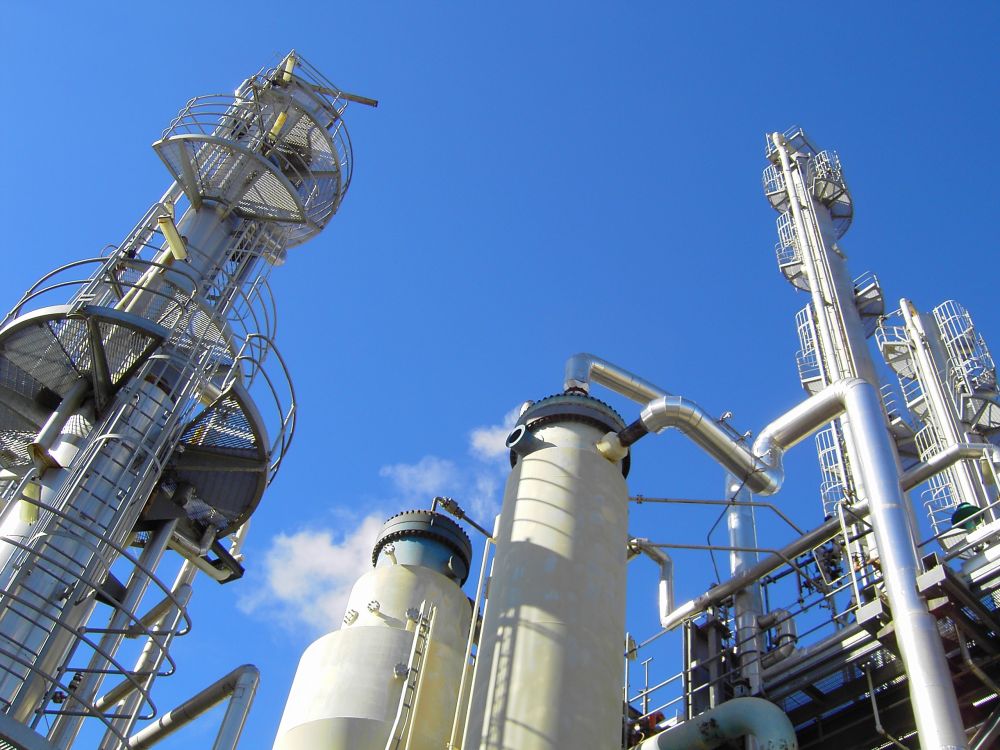A bright future for hydrogen
The UK could be a leader in clean hydrogen technology, say Eugene McKenna and Andy Walker from Johnson Matthey.

Can you explain to me what hydrogen is and talk through exactly how it is a low carbon energy source?
Eugene McKenna: What do you want from an energy source? Well, you want high energy density and you want something you can put into your car and transport easily – so in that sense, petrol is a great fuel. The problem, of course, is that carbon dioxide and other pollutants are emitted from the exhaust when used, which massively contributes to global warming. With clean hydrogen that doesn’t happen.
There are a couple of types of clean hydrogen or ‘colours’, as they are called. Green hydrogen refers to hydrogen produced via the electrolysis of water, with the electricity used in the process coming from renewable sources like wind and solar. Blue hydrogen is generated from natural gas, and although CO₂is produced in the process, it is captured and safely stored in geological features. In the North Sea between the UK, the Netherlands, Germany and Scandinavia, you can put CO₂ back into the exact same geological structures that oil and gas have come from for five decades, and it will stay there permanently.
Clean hydrogen is going to be essential when it comes to meeting countries respective zero carbon commitments, and Johnson Matthey, a global sustainable technologies company with more than 200 years heritage, is really leading the way in that.
Blue hydrogen currently is more ‘ready to go’ because you can use a lot of the energy infrastructure that already exists. And that’s why there are already some projects up and running globally to demonstrate the technology. Consider some examples from the UK. At the Stanlow Refinery in the North West of England, the natural gas will arrive at the site, blue hydrogen will be made, then the carbon dioxide will be removed, and they’ll produce large amounts of hydrogen to be used in local industry, put into the grid and distributed to houses. This project, which is in the first of many phases, will eventually produce the same amount of clean energy as the world’s largest offshore wind farm, and it’s all done using Johnson Matthey technology.
What opportunities does hydrogen present for us all?
EM: I think we’re now on the cusp of a transformation in technology – a new industrial revolution – that’s going to be far greener than the first, coal fuelled revolution in the 1800s. It’s a great opportunity for leading technology in clean hydrogen production, like JM’s LCH™ technology, to enable hydrogen to be used around the world in our homes, to power transport and to help decarbonise carbon-intensive industries.
Right now Johnson Matthey is deploying hydrogen technology in the North West of England, with the HyNet facility. We are involved with the Acorn project in Scotland and there are various projects in the pipeline for the Humber on England’s east coast, all for hydrogen energy and carbon capture, usage and storage. We are also developing technology for making green hydrogen too, drawing on our technical and market expertise to improve the performance and the economics for our customers.
What can hydrogen be used for?
EW: Clean hydrogen can be used in several different ways. We’ll be able to heat our houses and cook our food guilt free, because with hydrogen technology we’ll no longer be contributing to global emissions in the same way. It has been shown that a blend of 20% hydrogen in natural gas requires no change to domestic appliances.
But hydrogen also presents huge opportunities for uses in non-domestic settings in energy intensive sectors where switching immediately to renewable electricity simply isn’t possible. When manufacturing steel, glass or cement, for example, a huge amount of natural gas is burnt in the production process. If hydrogen was used instead, we wouldn’t see that massive carbon impact.
Andy Walker: Absolutely – hydrogen is incredibly flexible. The beauty of it is that it enables us to decarbonise sectors that are difficult to electrify. Eugene has mentioned high-temperature heavy industry, but there’s also trains and heavy lorries, where batteries aren’t appropriate because they’re too large and expensive and need recharging too often. For these vehicles, you replace the engine or battery with a fuel cell which runs off hydrogen. The first ever hydrogen fuel cell powered train launched in Germany in 2018 and they will starting in the UK soon, so rail lines that are currently run on diesel could be switched over to a clean fuel faster and cheaper than they would through electrification. There are already hydrogen fuel cell buses on our roads from China to Scotland, so the technology is there today, ready to be ramped up.
We also see opportunities in aviation, where instead of using the kerosene, you can make similar fuels in a sustainable way, using a synthesis of hydrogen and municipal solid waste – or rubbish! This kind of fuel can be used with the same planes we use today, but with a much lower carbon footprint.
What are the wider benefits of using hydrogen?
AW: There really are multiple benefits. Hydrogen can not only become the fuel of choice as part of the next wave of technological innovation. But also, in turn, it will lead to sustainable, clean growth that will help us meet our net-zero carbon obligations as a country and secure a cleaner, healthier future. Hydrogen is going to be front and centre of a clean energy transition that is simultaneously socially fair, and that doesn’t have to sacrifice the world’s economic viability – in fact quite the opposite.
What would a future hydrogen world look like?
AW: The picture I would paint is of clean hydrogen fueling the delivery trucks coming to our door, the buses we travel on, maybe even the long-haul flight we take or the train, and it is going to be in a lot of houses, keeping us warm and heating our food. It is going to be something that replaces natural gas in many ways in industrial processes too.
But for that to become a reality quickly, there needs to be consistent and far reaching policy in place so that people can invest with confidence. There needs to be assistance in the same way that there are grants available for electric vehicle charging stations and investment models for offshore wind. With incentives, with tax breaks, with infrastructure support, clean hydrogen production and hydrogen fuel cells can start to take off and then, when you hit scale, they ultimately become more attractive than carbon-intensive fuels.
In the aftermath of coronavirus, we all need to build back better. And that means building back in a fair and socially just way, which hydrogen can really contribute to. But that will require a joined up strategy that takes in all the affected sectors and links them holistically. Hydrogen will undoubtedly play a key part in the growth industries of the future and in future energy provision. It can lead that future and Johnson Matthey is ready to be in the driving seat.
Source: NewStatesman.






